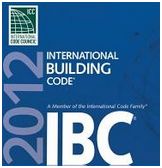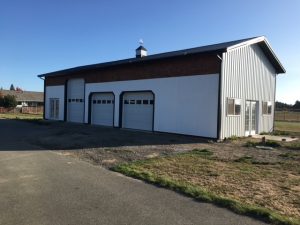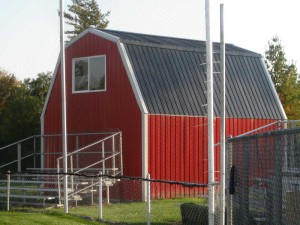Did I happen to mention verify?
So, you have a problem, or are trying to reach a goal – with the solution being a new building.
Now, with the solution in mind, what to do first?
Call around or shop online to get a price? Wrong answer.

The correct answer is to visit your planning and building departments to confirm local building codes, as well as what design criteria are to be followed.
Doing anything else, can end up burning up time for you, as well as anyone quoting your proposed project, besides leaving everyone with hurt feelings.
Every client who orders a new pole building from Hansen Buildings does so with these verification requirements:
“Purchaser acknowledges verification/confirmation/acceptance of all Building Code, Plan and Design Criteria included on Instant Invoice. Information Purchaser has verified includes, but is not limited to: Applicable Building Code version, Occupancy Category, Ground (Pg) and Flat Roof (Pf) Snow Loads, Roof Snow Exposure Factor (Ce), Thermal Factor (Ct), basic Wind Speed (3 second gust) and Wind Exposure, Allowable Foundation Pressure, Seismic Zone and Maximum Frost Depth, as well as obtaining for Seller any unusual code interpretations, amendments or prescriptive requirements for non-engineered buildings which could affect this structure.”
“Seller’s designs are all per specified Building Code and include the use of NDS Table 2.3.2 Load Duration Factors (Cd) as well as ASCE 7-05, Eq. 7-2 for slippery surfaces. Seller’s designs rely solely upon occupancy category and structural criteria for and at specified job site address only, which have been provided and/or verified by Purchaser. It is Purchaser’s and only Purchaser’s responsibility to ascertain the design loads utilized in this Agreement meet or exceed the actual dead loads imposed on the structure and the live loads imposed by the local building code or historical climactic records. Purchaser understands Seller and/or Seller’s engineer(s) or agents will NOT be contacting anyone to confirm.”
Sound like a lot of mumbo jumbo? Not really – read on to find out how to make this simple. And save yourself a lot of grief when you order a new building – of any kind!
We have a client who ordered his building in May under these very same requirements. The client confirmed they read and understood all of them when the order was placed.
Our engineer did his job, producing plans and calculations for the client, based upon the information client agreed to verify.
This morning client went in to apply for his building permit. The Building Official loved the engineered plans. However the incorrect code version was on them (their jurisdiction has gone from a 2003 to a 2007 version) and the ground snow load on the design was 70 pounds per square foot (psf), and at client’s site it actually needed to be 105 psf! In the client’s particular state, for every 100 feet the site is above sea level, the ground snow load is to be increased by 2 psf, above the basic map values.
Client is not happy – and we are none too pleased. We now have an unhappy customer before we have even shipped his pole building kit. Added to this, redoing his plans is like starting all over for us. And the fees we require don’t begin to cover the hassles of making all the changes.
However the onus for verification IS on him.
Now, why is it we or our engineer would not verify for the customer?
Here are some actual circumstances for past projects:
- A client gave an incorrect address for building site, resulting in wrong loads.
- We (or our engineer) have no way of knowing the actual elevation of where the building is to be situated. At times, a relatively small parcel of land can have hundreds of feet of elevation change (case in point – my own home is on a lot 60’ x 225’ with nearly 300 feet of grade change).
- County is contacted to confirm loads for an address, which they do. When client goes to apply for building permit, they find their address has been annexed by a nearby city (clients were sure surprised). The bad part – the “new” city was operating under an older version of the code and (even though entirely surrounded by the county) was using much higher snow load requirements.
According to Ben Franklin, “An ounce of prevention is worth a pound of cure”.
In all fairness to yourself and those, like us, who are trying to assist you in meeting your goals…..do your advanced verifications with your city or county’s Planning Department – confirm the local building codes and everyone will be far happier!









